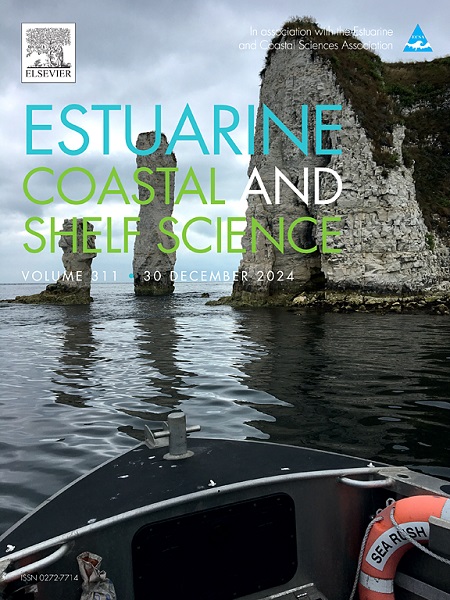Mortality event of the Mediterranean Invasive Sea Urchin Diadema setosum from Gökova Bay (Southern Aegean Sea)
IF 2.6
3区 地球科学
Q1 MARINE & FRESHWATER BIOLOGY
引用次数: 0
Abstract
The mass mortality of the long-spined sea urchin Diadema setosum, which has become invasive in the eastern Mediterranean and is originally common in tropical seas, was observed along the Mediterranean coast of Türkiye in the summer of 2022. The mass mortality event led to a significant decline in the sea urchin population in Gökova Bay, with over 90 % mortality. The culture method monitored pathogenic bacteria, while the diversity of bacteria, fungi, and protozoa was monitored metagenomically. Vibrio alginolyticus and Vibrio diabolicus were isolated as dominant bacteria in diseased individuals. The metabarcoding analysis confirmed a high presence of the genus Vibrio in diseased sea urchins. Although pathogenic species among the fungal species were detected, it was determined that the distribution of these species did not constitute a significant difference between healthy and diseased individuals. However, Philaster apodigitiformis ciliate genome was detected only in diseased individuals. Detecting different pathogenic agents in sea urchins may suggest that more than one agent could plays a role in mass mortality. Furthermore, environmental changes, including temperature variations and degraded water quality, likely heightened the susceptibility of sea urchins to infections. This study underscores the critical importance of understanding the pathogenic factors contributing to mass mortality events in marine species, with a particular focus on the impact of climate change on aquatic ecosystems. Further research, including histological examinations and experimental tests, is needed to comprehensively assess the role of specific pathogens in these events.
爱琴海南部Gökova湾地中海入侵海胆死亡事件
长刺海胆(Diadema setosum)已成为地中海东部的入侵物种,最初在热带海域很常见,于2022年夏季在t rkiye地中海沿岸观察到大量死亡。大规模死亡事件导致Gökova湾海胆种群数量显著下降,死亡率超过90%。培养法对病原菌进行监测,对细菌、真菌和原生动物的多样性进行宏基因组监测。在患病个体中分离到的优势菌为溶藻弧菌和拮抗弧菌。元条形码分析证实在患病海胆中大量存在弧菌属。虽然在真菌种中检测到致病种,但确定这些种的分布在健康个体和患病个体之间不构成显著差异。然而,Philaster apodigitformis纤毛虫基因组仅在患病个体中检测到。在海胆中检测到不同的致病因子可能表明,不止一种因子可能在大规模死亡中起作用。此外,环境变化,包括温度变化和水质退化,可能会增加海胆对感染的易感性。这项研究强调了了解导致海洋物种大规模死亡事件的致病因素的重要性,特别关注气候变化对水生生态系统的影响。需要进一步的研究,包括组织学检查和实验测试,以全面评估特定病原体在这些事件中的作用。
本文章由计算机程序翻译,如有差异,请以英文原文为准。
求助全文
约1分钟内获得全文
求助全文
来源期刊
CiteScore
5.60
自引率
7.10%
发文量
374
审稿时长
9 months
期刊介绍:
Estuarine, Coastal and Shelf Science is an international multidisciplinary journal devoted to the analysis of saline water phenomena ranging from the outer edge of the continental shelf to the upper limits of the tidal zone. The journal provides a unique forum, unifying the multidisciplinary approaches to the study of the oceanography of estuaries, coastal zones, and continental shelf seas. It features original research papers, review papers and short communications treating such disciplines as zoology, botany, geology, sedimentology, physical oceanography.

 求助内容:
求助内容: 应助结果提醒方式:
应助结果提醒方式:


